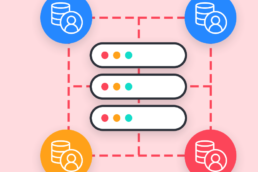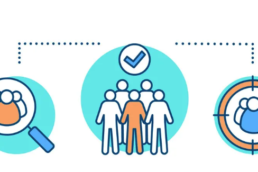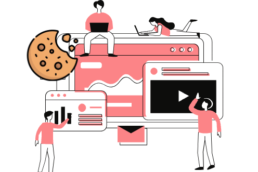Programmatic advertising is becoming the next big thing. Programmatic marketing became the next big thing, and it was there. It is no longer an option, it’s a necessity.
“Programmatic advertising is the future of digital advertising, and it’s here now.” – Dave Morgan, Founder and CEO of Simulmedia.
It allows brands to reach the right audience at the right time, with the right message, in the most efficient and effective way possible. But there must have acceptance of the alternative and allay of fear. One of those fables is programmatic marketing, and marketing dies of creativity. It’s more or less about how recordings and creatives can be prepared in one place,delivering the right message.
So when thousands send the right message to the right person, even if it doesn’t need to be shown now. Programmatic advertising is the fastest-growing area of advertising, and it’s poised to revolutionize the way brands connect with consumers.
In India, Sociomantic works with a maximum of e-commerce systems such as Myntra, Koovs, Jabong, Pepperfry, Nykaa, and eBay. One of the key functions of the company is to bring the customer back to their customer’s website.
Global trade service
The global trade service coins it. Where consumers and businesses are empowering technology to make purchasing decisions on their behalf based on pre-programmed parameters and learned preferences. Programmatic advertising is transforming the advertising industry by allowing brands to automate the buying and selling of ads, making it easier, more efficient, and more effective.

Today, more than five billion connections of devices are on the Internet.
Coupled with the growth of smart data and consumers becoming more comfortable sharing their data, programmatic commerce will become commonplace in the future. This proposal also comes at a time when talk of “omnichannel retail is growing weary.” Retailers are working to unify their channels and are very focused on seamless shopping experiences, whether online or offline. More importantly, the role of mobile is about getting there.
On the other hand, it feels new and exciting to talk about and something that has the potential to really change the industry. Programmatic advertising is the future of marketing. It’s not a question of if, but when, brands will fully adopt this technology. Tackling the problem of repeat purchases is a huge opportunity, especially for the consumer goods and grocery markets.
Anything that makes it easy for consumers will work because they are inherently lazy. Combined with price reductions, that’s exactly why we pressed the button. to call an Uber, for example. Suddenly, software automation replaces logical thinking. Data-driven marketing to enable personalization is already underway; Thanks to the IoT, this only goes one step further. A significant benefit for consumers when they replace cars instead of choosing them is that they get their time back.
Role of AI
The role of artificial intelligence or our digital assistants is also becoming increasingly relevant in this area: the intermediary who delegates our decision-making.
The key here is that the “personal connection” they form with your assistant makes consumers more willing to share their personal information. Buying opportunities are filtered according to taste, which ultimately also changes the role of online searches. This exceptional access to personal data is incredibly powerful and will ultimately make SEO and PPC a lot less dominant in search. Personal assistants consult more diverse sources of information and can check more resources, some of which are not visible in the search.
As you can already see from the nature of many online groceries and Amazon too, search moves from a query to a recommendation.
All of this is likely to have a big impact on sellers as well. Because the IoT and personal data can anticipate demand, marketing will play a lesser role in decision-making.
More importantly, machine-assisted repeat purchases also “lock” the consumer to a brand. Change the buyer’s marketing.
When it’s banned, it becomes increasingly expensive and difficult to win back that customer!



